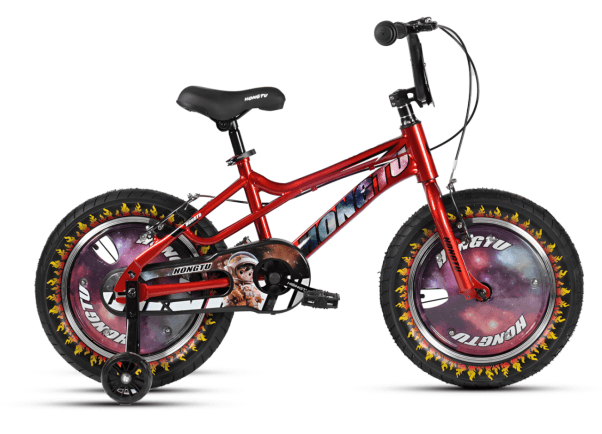The first bike for your child: a complete guide to buying a children’s bike (Part 1)
hildren’s eyes are full of desire for riding. As a parent, it is very important to choose a suitable children’s bicycle for your child. A good children’s bicycle not only allows children to enjoy the fun of riding, but also affects their safety and growth. Today, we will bring you a comprehensive guide to choosing children’s bicycles to help you easily choose the most suitable “riding partner” for your child.
Precisely matched size, more comfortable and safe riding
If the size of a children’s bicycle is not appropriate, it will make riding difficult and even increase the risk of falling. When choosing, you need to refer to the child’s height and age. Generally speaking, children aged 1-2 years old and 75-85cm tall are suitable for 12-inch bicycles, which are small and light and easy for children to control; children aged 3-4 years old and 90-105cm tall are more suitable for 14-inch bicycles; children aged 5-7 years old and 105-125cm tall can meet the needs of 16-inch bicycles; children aged 8-10 years old and 125-145cm tall can consider 18-inch bicycles; children aged 10 years old and over 145cm tall can consider 20-inch bicycles.
In addition to referring to age and height, it can also be determined by actual measurement. Let the child sit astride the crossbar of the bicycle, with both feet flat on the ground and legs slightly bent, and when holding the handlebars with both hands, the arms are naturally stretched and not tight. This size is more appropriate. If the child’s feet are hanging in the air after sitting, or the child’s body is curled up too much when riding, it means the size is wrong and you need to choose a new one.
Strictly control safety details to protect your children
Safety is the top priority when buying a children’s bicycle. First of all, the frame material should be durable and lightweight. Common frame materials include steel, aluminum alloy, etc. Steel frames are relatively cheap, but heavy, and it will be more laborious for children to ride; aluminum alloy frames are light and corrosion-resistant, which is a good choice, but the price is relatively high. Secondly, the brake system should be sensitive and reliable. Children’s bicycles are generally equipped with caliper brakes or disc brakes. Caliper brakes have a simple structure and are cheap, but the braking effect may be weakened in muddy or humid environments; disc brakes have strong braking force and are not affected by the environment, but the cost is higher. It is recommended to give priority to bicycles with brakes on both the front and rear wheels to ensure that children can brake in time.
In addition, other safety details of the bicycle should also be checked. The handlebars, seat and other parts should be installed firmly and not loose; the spokes of the wheels should be evenly distributed without deformation or breakage; the surface of the frame should be smooth and without sharp edges to prevent children from scratching during riding.
The above is about choosing the size of children’s bicycles and controlling the safety details, but these two aspects are far from enough when it comes to purchasing children’s bicycles. The space is limited, see you in the next article!

